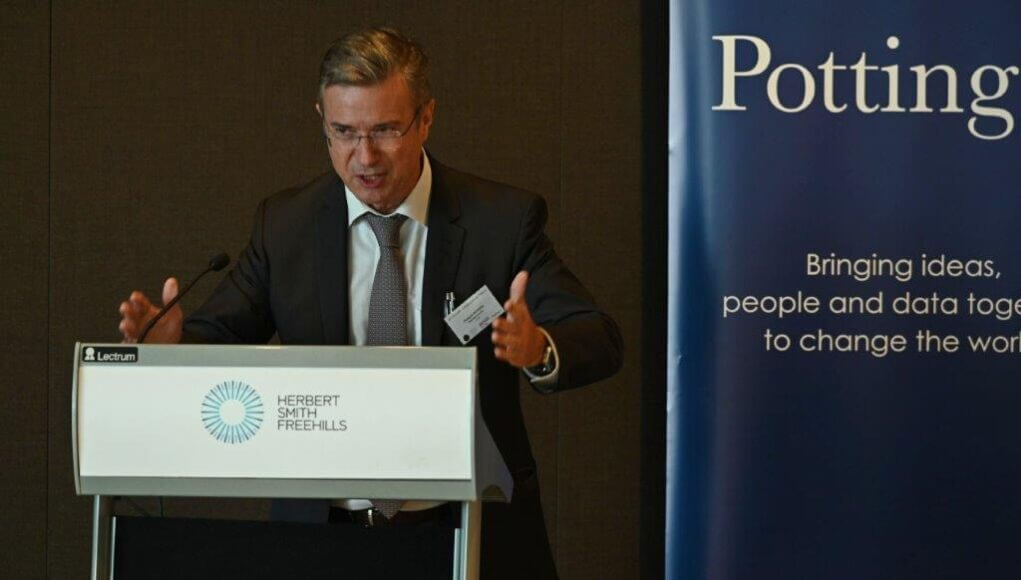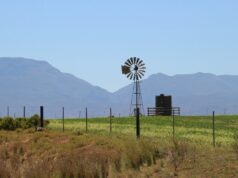INTERVIEW with François Bergère, Long-Term Infrastructure Investors Association (LTIIA), Executive Director. For further expert opinions please use the question-level hyperlink.
| Do you expect the pandemic to have a tailwind or rather a headwind effect on the low-carbon transition pace, taking into account the concerns expressed by some market participants in regard to possible funding cuts and the risk of unsustainable recovery measures?
We should differentiate short-term and mid- to long-term impacts. In the short-term, and despite virtuous announcements by several governments, there is a real risk that measures designed to bolster employment in existing activities be adopted, regardless of their carbon footprint. Plus, the funding capacity of many industrial and public economic actors for new, discretionary investments primarily motivated by GHG-carbon emissions, has been curtailed, potentially delaying previously planned investments intended to decrease the GHG footprint. And of course, the historically low level of oil prices, partly due to the pandemic-induced decrease in Transportation activities doesn’t help.
But over a mid-term horizon, my conviction is that this crisis will be seen as a watershed event and a wakeup call that we have to fundamentally reconsider our way of doing business as usual if we are serious about averting even bigger – and irreversible – threats to our lifestyle.
| What challenges does the recently released LTIIA ESG Handbook 2020 help infrastructure investors to tackle?
The ever growing variety of definitions and increasingly fragmented ESG market, as new and competing guidelines emerge regularly around sustainability, green loans, or SDG-linked products are a major impediment for asset owners and managers. Investment professionals need actionable and practical standards to measure and benchmark their performance. The Handbook is meant as a tool to explain and help readers navigate the ESG landscape. It deals on one hand with the various available standards – providing guidelines on investment, risk management and reporting frameworks, and tools, on the other hand – using scoring techniques and market scanning, highlighting the specific interest, scope and potential limitations of each. This exercise is supported by sharing insights from our members as to which standard(s) or tools they use in their ESG process and for which reason. We hope this combination of pedagogical clarity and collective experience from a network of institutional investors representing more than $350 bn in Infrastructure assets will prove a valuable guide to all investors.
| The ESG Handbook emphasizes that ‘not having a systematic and specific approach to ESG for infrastructure may lead to significant blind spots which would ultimately hurt performance over the long run and create damaging reputational issues’, additionally indicating critical infrastructure-specific parameters. Would you please elaborate on that?
Ticking the box isn’t merely enough in today’s world full of uncertainties and disruptions. One-size-fits-all approach doesn’t work over time. One needs to actively envision and prepare for ESG issues. Institutional investors in infrastructure are in for the long-term. Many risks can materialize during this long period, from climate-linked to social behaviours to technology-induced disruptions, affecting negatively the value and profitability of an investment. And nobody had anticipated the profound impact of a pandemic event on infrastructure uses and returns. One naturally thinks of environmental and climate issues as a major source of threats to infrastructure investments (a typical example is that of the Californian utility PG&E which – though well ESG-rated went into bankruptcy over its transmission networks-linked wildfires), but stranded assets are not limited to climate change or regulatory issues, as other industrial catastrophes or reputational controversies are here to attest.
| How would you assess the current stranded asset risk awareness between infrastructure investors?
I believe a major shift is happening before our eyes. Constant evolving regulations in key countries and regions such as the US, China and the EU, carbon pricing policies and social norms pressure (e.g. fossil fuel divestment) have sparked the emergence of stranded assets, because of transition risks, but also physical risks. And whether spontaneously, or under the pressure of their shareholders and stakeholders, investors are now realizing that they have much less time than they previously thought to adapt to the new sustainability paradigm. This goes beyond the well-known concept of carbon-intensive stranded assets as even green assets can become stranded if for instance, they do not address adaptation considerations.
Greenwashing is by its very nature a short-term palliative to a long-term existential issue. Asset owners in for the long term have the responsibility to see through this type of behaviours by asset managers and discourage it. This requires an activedue diligence process of selecting asset managers – whereby special attention is paid to managers’ ESG practices and asset location and potential ESG risks – and sometimes extending to asset level ESG Due Diligence activities.
But that may not be enough. At a broader, financial market level, requesting disclosure of relevant data & information (as in the TCFD approach) is needed, as are the dissemination of a harmonized taxonomy and of standardized KPIs to facilitate ESG valuations and monitoring in the medium- and long-term. And of course, regulatory requirements need to be adhered to, but should not be seen as the limit, as investors have a broader responsibility to go beyond when feasible, push and pioneer this trend.
| What are the ESG-related key findings of your Member Survey 2020?
LTIIA association, from the onset in 2014, has emphasized, as part of its raison d etre, the long-term nature and implications of Infrastructure investment. As our ESG survey reveals, awareness is not an issue any longer: the vast majority of our responding members have a dedicated ESG team, have set internal ESG goals and consider ESG to be a key dimension in selecting a fund manager. They also agree it can be a deal breaker. Low accessto relevant data remains the main impediment: managers often have relatively good methodological approaches, but they suffer from weak disclosure and lack of consistent and comparable data across asset classes, industries, and companies that support adequate monitoring practice. As for the main standards and tools they are using in their ESG processes, GRESB, SASB or PRI are widely mentioned.
| brief bio
François Bergere, joined the Long-Term Infrastructure Investors Association as Executive Director in September 2018. He has a long and diversified professional experience in the fields of public management, project and infrastructure finance, having worked as a senior auditor at the French supreme audit institution, a manager of multinational Equity Investment funds in infrastructure; and in the French ministry of Finance to set-up and manage the PPP task force, before joining the World Bank from 2014 as Program Manager for PPIAF (Public-Private Investment Advisory facility), a trust-fund aimed at creating an investment-enabling environment for private sector participation in infrastructure.
Founded in 2014, LTIIA gathers over 40 investors active globally in the field of long-term investment in infrastructure. The Association’s three key priorities at the core of its action:
〉proactive engagement with public stakeholders to support attractive investment frameworks,
〉development of financial performance benchmarks to promote infrastructure as an asset class, and
〉definition and sharing of best practices in relation to ESG issues.









